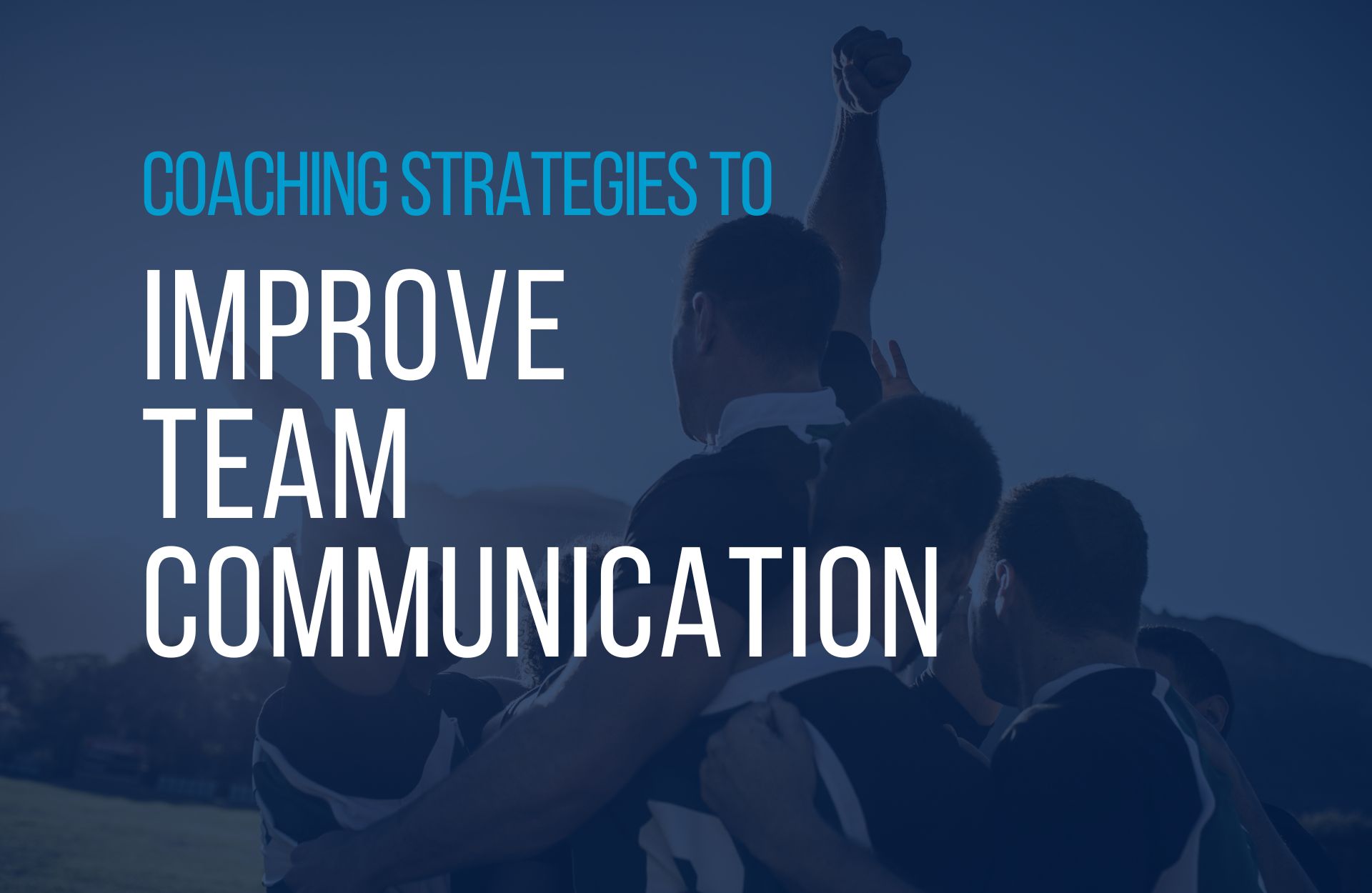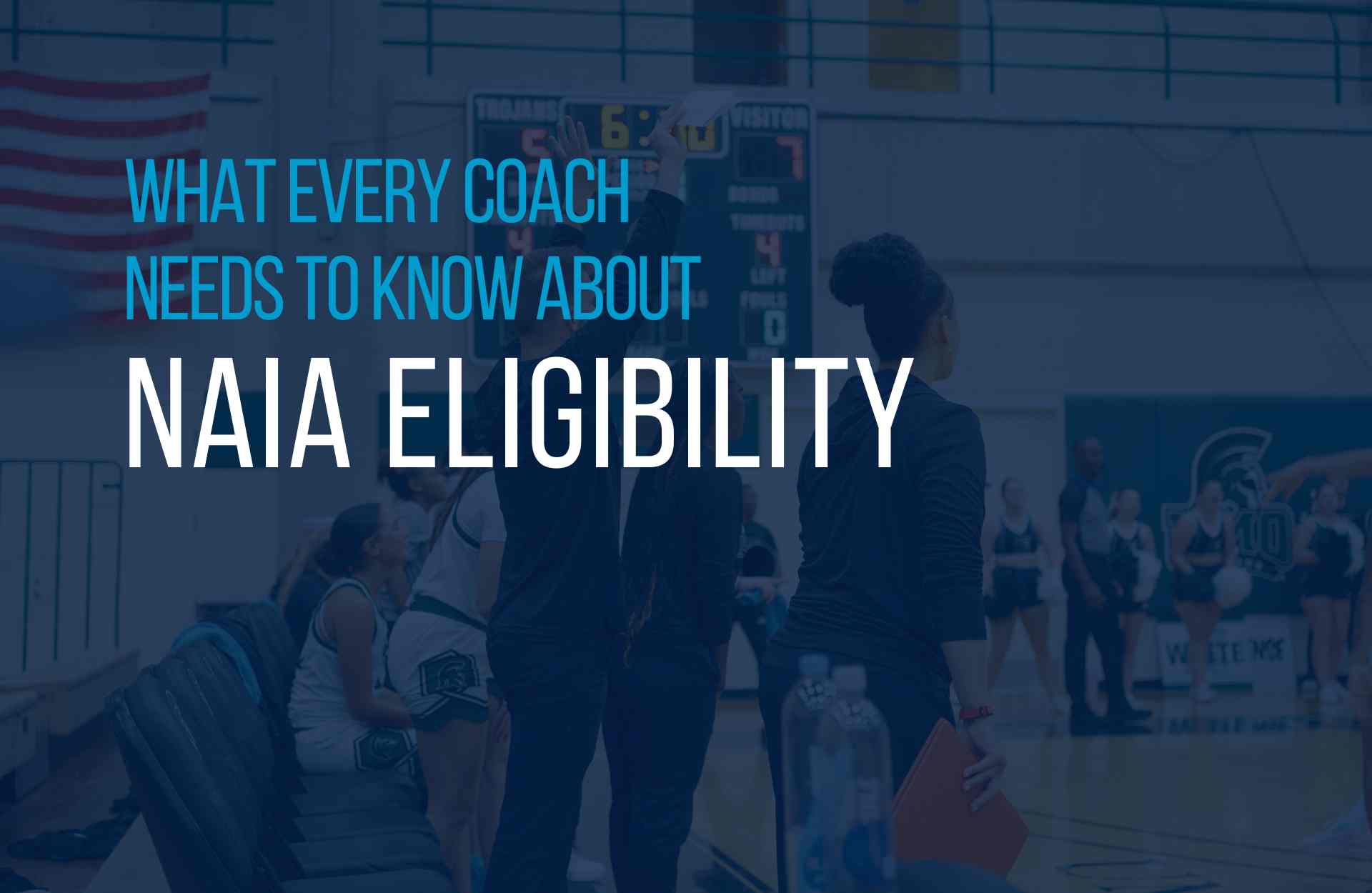Top 10 Coaching Strategies to Improve Team Communication


Strong communication is the foundation of every successful team. On the field, in the locker room, and throughout the season, the ability to connect, listen, and lead effectively can make the difference between good teams and great ones.
For coaches, communication goes far beyond delivering instructions. It’s about building trust, fostering collaboration, and creating an environment where athletes understand expectations, feel heard, and perform at their best.
Whether you’re leading a small roster or an entire athletic department, mastering communication is essential. Here are ten proven coaching strategies to improve team communication, build stronger connections, and enhance overall performance.
1. Establish a Shared Vision and Language
Every successful sports coaching program begins with a shared sense of purpose. When athletes, from collegiate athletes to those in professional sports, understand the “why” behind what they do, communication becomes easier, clearer, and more meaningful.
A great head coach or team coach knows that alignment starts with language. Defining your program’s vision, values, and terminology is one of the most effective coaching techniques for fostering trust and clarity.
Create common language around goals, performance standards, and expectations. For example, words like discipline, grit, or unity should mean the same thing to every player, assistant, and member of your coaching team.
A shared vocabulary eliminates confusion, reinforces team culture, and ensures that when you communicate, whether during a coaching session, in meetings, or through digital messages, everyone is aligned.
This kind of structured communication is a hallmark of effective coaching in both physical education settings and professional teams.
2. Prioritize Two-Way Communication
The best sports coaches understand that great communication is not a one-way street. The most effective coaching technique is often the simplest: active listening.
When coaches listen as much as they talk, they create environments of mutual respect and understanding, essential for building a lasting coaching relationship.
Effective coaches who practice active listening during every coaching session learn more about their athletes’ motivations, challenges, and perspectives.
Encourage athletes to share feedback openly: about training, team dynamics, or even coaching techniques themselves. You’ll often uncover small issues before they grow into bigger problems.
Structured feedback systems, such as anonymous forms, post-practice check-ins, or short surveys, are supported by sports science and sports medicine research showing that communication and trust directly impact performance and wellbeing.
When athletes feel heard, they perform with confidence. The most effective coaching happens when clients feel empowered, and teams thrive because they know their voices matter.
3. Communicate Consistently and Clearly
Consistency is the cornerstone of effective coaching. In sports coaching, unclear or fragmented communication leads to frustration and lost focus.
Athletes thrive on structure. When information, like schedules, expectations, or strategies, changes frequently or comes from multiple sources, even the best coaching techniques can fall short.
A modern sports coach should centralize communication using one reliable platform. Whether it’s a secure team messaging app, shared document hub, or athlete management system, consistency in delivery keeps everyone aligned.
Clear, timely updates about practice plans, competitions, and logistics demonstrate professionalism and reliability, traits that separate an effective coach from a reactive one.
In professional sports and collegiate programs alike, sports coaches who establish communication routines set their athletes up for success. Consistency breeds trust, and trust builds stronger teams, a principle rooted in both leadership and sports science.
4. Leverage Technology to Keep Everyone Connected
In the modern era of sports coaching, technology is an essential coaching technique.
Coaches today manage group chats, emails, and apps, but without a connected system, messages are easily lost or misinterpreted.
Modern communication platforms designed for athletics make it easy to reach every athlete and staff member instantly.
For example, personalized messaging tools allow coaches to send announcements, reminders, or motivational notes directly from their phones, maintaining authenticity while improving efficiency.
For professional teams, collegiate athletes, and developmental programs alike, digital communication tools can transform how a head coach and staff operate. These technologies enable better monitoring, faster updates, and improved coordination across departments.
Technology doesn’t replace leadership, it strengthens it. When sports coaches use digital tools strategically, they streamline workflows, enhance clarity, and create more effective communication patterns.
That’s the essence of effective coaching techniques: empowering athletes with clarity, structure, and connection.
5. Be Transparent About Roles and Expectations
One of the most powerful yet often overlooked coaching techniques is transparency. Miscommunication about roles and expectations can lead to conflict, frustration, and underperformance, even among elite athletes.
An effective coach sets expectations early. Define each athlete’s role within the team structure, explain how it supports overall strategy, and revisit it regularly as the season evolves. This clarity supports team harmony and allows every player to focus on growth.
Transparency also strengthens the coaching relationship. When athletes understand their purpose, they communicate more confidently and collaborate more openly.
For sports coaches in professional sports or physical education, this is essential, especially when managing diverse personalities and performance levels.
Research in sports science reinforces this approach: athletes who clearly understand their role experience less stress and greater motivation. Whether you’re coaching a youth team or leading professional teams, transparent communication is a fundamental effective coaching technique that builds trust, consistency, and alignment.
When players know how their contributions fit into the bigger picture, they’re more likely to embrace their responsibilities, and that’s when the true magic of effective coaching happens.
6. Foster Your Emotional Intelligence (EQ)
Technical skills win games, but emotional intelligence sustains success. Coaches with high EQ understand that effective communication requires empathy, awareness, and adaptability.
Different athletes respond to different styles of feedback. Some thrive on direct, high-energy communication. Others need calm, constructive conversations. The key is recognizing those differences and adjusting accordingly.
Take time to learn your athletes’ personalities, motivators, and communication preferences. A coach who adapts communication styles to the individual creates stronger connections, and in turn, stronger teams.
7. Encourage Peer-to-Peer Communication
Communication shouldn’t only flow from the top down. Teams perform best when athletes communicate clearly with one another on and off the field.
Encourage leaders to take ownership of team dialogue. Empower captains and upperclassmen to reinforce standards, organize discussions, and support younger athletes.
You can even formalize this through leadership development or mentorship programs. When players communicate openly, accountability rises, and the team culture becomes self-sustaining.
8. Use Meetings and Huddles Wisely
Meetings are powerful opportunities for connection, but only when they’re purposeful. Too many programs fall into the trap of long, unfocused meetings that dilute attention and engagement.
Structure your team meetings like your practices: concise, intentional, and outcome-driven. Begin with clarity on objectives, provide space for dialogue, and end with clear takeaways.
Short, frequent check-ins can often be more effective than long sessions. Use team huddles before or after practice to reinforce priorities, celebrate wins, and keep everyone aligned.
9. Model the Communication You Expect
Coaches set the tone. The way you communicate, your tone, timing, and demeanor, becomes the standard your athletes emulate.
If you expect open, respectful communication among players, demonstrate it in every interaction. Be approachable. Admit mistakes. Praise publicly and correct privately.
When athletes see consistency between your words and actions, they mirror that authenticity. Teams reflect the communication culture their leaders create.
10. Reinforce Culture Through Continuous Feedback
Communication doesn’t end once the message is delivered. Follow-up is what makes communication effective.
Regular, structured feedback sessions, both individual and team-based, reinforce growth and alignment. Highlight what’s working, address what needs improvement, and connect every conversation back to the team’s goals and values.
Modern digital tools can support this process. For example, shared platforms allow coaches to track communication, send follow-up reminders, and document progress over time. Consistent feedback not only strengthens communication but also builds accountability and trust.
Building a Culture of Connection
Improving team communication isn’t about adopting a few coaching techniques or installing another app, it’s about building a culture where information flows freely, honestly, and with purpose. A truly connected team operates on trust, self-awareness, and shared core values.
When athletes understand expectations, feel heard, and stay connected, they perform better.
Athletic performance improves not just because of physical talent, but because communication enhances decision-making, confidence, and coordination. Great coaches recognize that interpersonal skills, listening, empathy, clarity, are as essential to success as physical conditioning or strategy.
For today’s coaches, technology plays a growing role in sustaining that culture. Digital platforms that centralize messaging, scheduling, and data make it easier to foster consistent communication and constructive feedback across the entire organization.
Coaches gain real-time visibility into their team’s progress, while athletes stay informed and accountable.
How WinWon Supports a Culture of Connection
WinWon gives athletic departments and coaching staffs a practical model for consistent communication and collaboration.
The platform is designed to help teams develop strong interpersonal skills, encourage self-reflection, and create habits that lead to positive behavior and personal growth.
By unifying scheduling, messaging, and document sharing into one connected space, WinWon allows coaches to:
- Send personalized updates and constructive feedback instantly.
- Track athlete engagement, attendance, and readiness in real time.
- Reinforce core values and team standards through consistent messaging.
- Support goal setting and achievable goals for both individuals and groups.
Whether you’re guiding collegiate athletes or a professional-level roster, WinWon provides the digital infrastructure to align your team’s vision, communication, and desired outcomes.
Beyond logistics, WinWon empowers coaches to dive deeper into athlete development, combining traditional sports coaching with insights inspired by sports science and behavioral psychology.
Teams that use WinWon report greater clarity, better problem-solving, and more confident leadership across their programs.
In essence, WinWon helps turn communication into a catalyst for transformation, guiding athletes and staff toward new possibilities, stronger relationships, and measurable improvement.
Because when connection is intentional, communication is clear, and goals are shared, every organization, from small teams to full athletic departments, performs at its best. Together.
Keep up with WinWon
See below for recent news and follow us on social media @winwontech
.png)
.png)
West Liberty University Launches Partnership with WinWon to Transform Athletic Department Operations


NAIA Eligibility: What Every Coach Needs to Know (and What Actually Wastes the Most Time)


